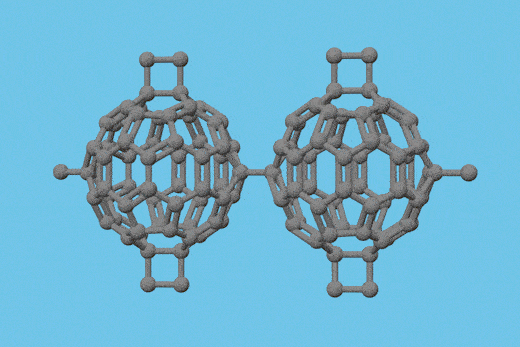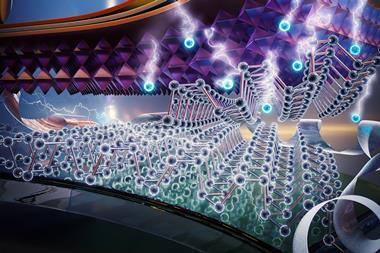When you see the term ‘2D material’, your mind is almost certain to conjure up the chicken-wire lattice of graphene. But news that researchers have used phosphorene nanoribbons to significantly improve the efficiency of a solar cell, suggests phosphorene is vying for the title of ‘wonder material’ so often associated with its carbon cousin.
Numerous homoatomic main group analogues of graphene have been predicted, isolated and tested in the last few years. Silicene, germanene, stanene, arsenene, antimonene, borophene and phosphorene all represent promising directions for advancing fundamental and applied science. Increasing the depth of 2D material research even more, however, are van der Waals heterostructures.
These layered materials comprise different 2D materials, such as graphene, transition metal oxides, carbides, nitrides or chalcogenides laid on top of one another. Those layers are held together by van der Waals interactions, rather than chemical bonds, which makes it possible to mix and match disparate materials without the constraints of crystal lattice matching. It gives scientists a platform for creating metamaterials that bypass the limitations of single-material systems.
Technology we reported on in January is set to accelerate research on van der Waals heterostructures. Manufacturing typically involves a trade-off between speed, scale and quality, but by devising a method that integrates wafer-scale growth, contact-free patterning and automated assembly, it can churn out complex yet consistent assemblies. What also makes this system stand out is its ability to control the twist angle between layers.
Twisting adjacent layers relative to each other offers an additional way to tune the properties of van der Waals heterostructures. And the superlattices that result from rotating those layers can give rise to exotic fundamental physics. Scientists have suggested these materials could provide a route for realising experimentally elusive states of matter and serve as a simulation platform for studying quantum materials.
Graphene started a research frenzy across flatland that has expanded in unexpected directions, attracting interest in both fundamental and applied research. Transitioning advances associated with 2D materials from the lab to practical applications will be driven by progress in materials characterisation, device design and manufacturing. 2D materials are the ultimate playground for multidisciplinary research and it’s increasingly apparent that science has barely scratched the surface of their potential.












No comments yet